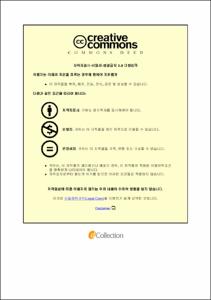형광 리포터 마우스를 활용한 T 세포 소진 과정에 대한 연구
- Alternative Title
- Study on the process of T cell exhaustion using fluorescent reporter mice
- Abstract
- CD8+ T cells are essential for fighting chronic viral infections and cancer. However, constant exposure to antigens and environmental cues in these conditions can lead to a dysfunctional or "exhausted" state in CD8+ T cells. Preventing this exhaustion is crucial for effective disease control. Immune checkpoint blockade (ICB) therapies, which inhibit receptors on these dysfunctional cells, have significantly improved anti-tumor and anti-viral responses. However, its lasting clinical benefits for many patients remain elusive. Understanding the cellular and molecular mechanisms underpinning the process of T cell exhaustion and ICB responses is crucial. Stem-like CD8+ T cells, governed by T cell factor 1 (TCF1), are essential for the response to ICB therapy. However, recent findings suggest that the reliance on TCF1+CD8+ T cells for ICB efficacy may vary across different tumor contexts. The transcription factor TOX regulates genetic programs that initiate and maintain T cell exhaustion. To explore the factors influencing the differentiation or exhaustion of CD8+ T cells within tumors, the expression dynamics of TCF1 and TOX in CD8+ T cells were analyzed using a newly developed fluorescence reporter mouse capable of tracking TCF1 and TOX expression. Additionally, to evaluate the impact of PD-1 deficiency, a reporter mouse that lacks PD-1 expression was generated. Tumor growth and the expression levels of TCF1 and TOX in tumor-infiltrating lymphocytes (TILs) were examined in both LLC1 and LLC1-mOVA tumors implanted into these reporter mice. Partial tumor control was observed in reporter mice implanted with LLC-mOVA, indicating a significant increase in TCF1 and TOX double-positive cells among CD8+ TILs compared to those in LLC1. This suggests that the dominance of the TCF1+TOX- population in CD8+ TILs within LLC1 reflects a naive-like status due to low antigen expression. In scenarios where cancer antigenicity remained unchanged, inhibiting PD-1 had minimal effect on tumor control or TCF1 and TOX expression dynamics. However, when both increased antigenicity and PD-1 deficiency were present, notable differences were observed in tumor control and the differentiation of CD8+ TILs. CD8+ TILs from PD-1 KO mice with LLC1-mOVA exhibited a majority of TCF1-negative populations undergoing progressive differentiation into effector-like transitory cells, characterized by the TCF1-TOX+ population. Expression levels of Tim-3, 4-1BB, CD226, and granzyme B significantly increased in the TCF1-negative population of CD8+ TILs, with higher levels observed in the TCF1-TOX- population compared to the TCF1-TOX+ late dysfunctional population. This study employed a reporter mouse model to visualize TCF1 and TOX expression, correlating these dynamics with tumor immunogenicity and elucidating the relationship between optimal CD8+ TIL priming, differentiation, and tumor factors, thus enhancing the understanding of ICB therapy efficacy.|CD8+ T 세포는 만성 바이러스 감염과 암과 싸우는 데 필수적이다. 그러나 항원과 환경 신호에 지속적으로 노출되면 CD8+ T 세포는 기능이 떨어지거나 "피로" 상태에 빠질 수 있다. 이러한 피로를 예방하는 것은 효과적인 질병 통제에 중요하다. 면역 관문 억제(Immune Checkpoint Blockade, ICB) 요법은 이러한 기능 저하 세포의 수용체를 억제하여 항암 및 항바이러스 반응을 크게 향상시켰다. 그러나 많은 환자에게서 지속적인 임상적 혜택을 얻는 것은 여전히 어려운 상황이다. T 세포 피로와 ICB 반응의 세포 및 분자 기전을 이해하는 것이 중요하다. TCF1에 의해 조절되는 stem-like CD8+ T 세포는 ICB 요법에 대한 반응에 필수적이다. 최근 여러 연구에서는 ICB 효능을 위해 TCF1+CD8+ T 세포에 대한 의존성은 다양한 종양 맥락에 따라 다를 수 있다고 주장한다. 전사 인자 TOX는 T 세포 피로를 시작하고 유지하는 유전 프로그램을 조절한다.
종양 내 CD8+ T 세포의 분화 또는 피로에 영향을 미치는 요소를 탐구하기 위해, TCF1과 TOX의 발현 동태를 추적할 수 있는 새로운 형광 리포터 마우스를 사용하여 CD8+ T 세포에서 TCF1과 TOX의 발현 동태를 분석하였다. 또한 PD-1 결핍의 영향을 평가하기 위해 PD-1 발현이 없는 리포터 마우스를 만들었다. 이 리포터 마우스에 LLC1과 LLC1-mOVA 종양을 이식하여 종양 성장과 종양 침윤 림프구(TIL)에서 TCF1과 TOX의 발현 수준을 조사하였다.
LLC-mOVA를 이식한 리포터 마우스에서 부분적인 종양 제어가 관찰되었으며, 이는 LLC1에 비해 TCF+ TOX+ CD8+ TIL이 상당히 증가함을 확인했다. 이는 LLC1 내 TCF1+TOX- CD8+ TIL은 낮은 항원 발현으로 인한 naive-like 상태를 반영함을 시사한다. 암 항원성을 변화시키지 않은 상황에서의 PD-1 억제는 종양 제어나 TCF1 및 TOX 발현 변화에 미미한 영향을 끼쳤다. 그러나 암 항원성이 증가하고 PD-1 결핍이 동시에 존재할 때 종양 제어 및 CD8+ TIL의 분화에서 두드러진 차이가 관찰되었다. LLC1-mOVA를 가진 PD-1 KO 마우스의 CD8+ TIL은 TCF1- population을 다수 보였다. 이는 effector-like transitory 세포로 점진적으로 분화되는 세포이며, TCF1-TOX+ 이다. TCF1-CD8+ TIL에서 Tim-3, 4-1BB, CD226, 그리고 granzyme B의 발현 수준이 상당히 증가했으며, TCF1-TOX+ late dysfunctional population 에 비해 TCF1-TOX- population에서 더 높은 수준으로 관찰되었다.
이 연구는 리포터 마우스 모델을 사용하여 TCF1과 TOX의 발현을 시각화하고, 이러한 변화 양상을 종양 면역원성과 연관시키며, CD8+ TIL의 항원에 의한 활성화, 분화 및 종양 요인 간의 최적의 관계를 설명함으로써 ICB 요법의 효능에 대한 이해를 향상시킬 수 있다.
- Issued Date
- 2024
- Awarded Date
- 2024-08
- Type
- Dissertation
- Alternative Author(s)
- Won Ju Young
- Affiliation
- 울산대학교
- Department
- 일반대학원 의과학과 의과학전공
- Advisor
- 진형승
- Degree
- Master
- Publisher
- 울산대학교 일반대학원 의과학과 의과학전공
- Language
- kor
- Rights
- 울산대학교 논문은 저작권에 의해 보호받습니다.
- Appears in Collections:
- Medical Science > 1. Theses (Master)
- 파일 목록
-
-
Download
 200000805458.pdf
기타 데이터 / 4.32 MB / Adobe PDF
200000805458.pdf
기타 데이터 / 4.32 MB / Adobe PDF
-
Items in Repository are protected by copyright, with all rights reserved, unless otherwise indicated.